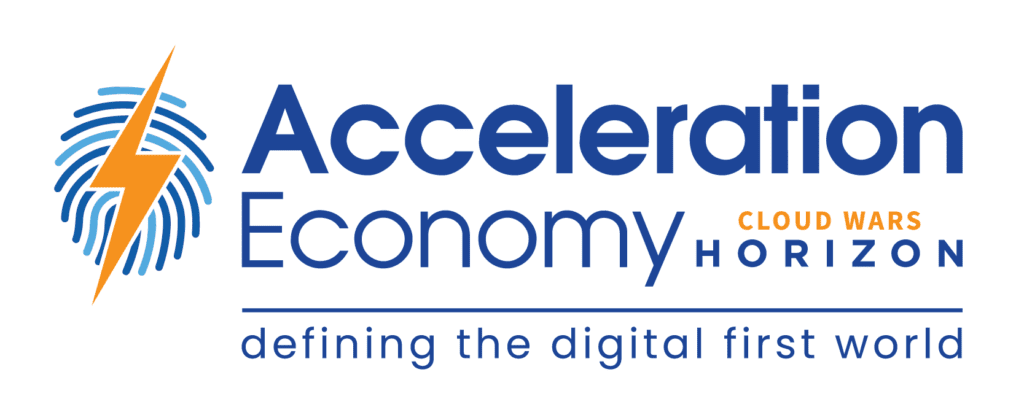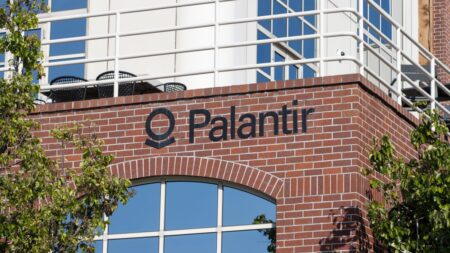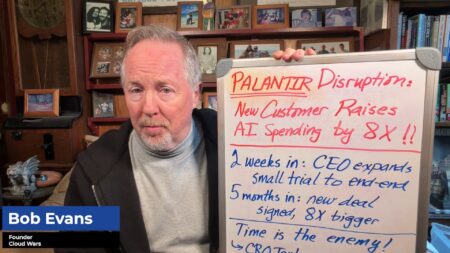Several key players in the cloud market reported results this week, sharing perspectives on customer buying trends, macroeconomic conditions, and business performance that are almost as divergent as their product lines.
This analysis includes the results of HPE, C3.ai, MongoDB, and Veeva Systems. None of the companies experienced major “misses” relative to forecasts, but all are presenting tempered outlooks based on the customers they’re engaging with. As such, they represent an insightful cross-section of market conditions for the Acceleration Economy reader.
HPE: All In on Hybrid Cloud
HPE’s Greenlake platform and hybrid cloud served as the headline of the company’s third fiscal quarter ended July 31.
The company reported revenue of $7 billion, up modestly from $6.9 billion one year ago. Non-GAAP earnings were 48 cents per share, a penny higher than one year ago and in line with analysts’ expectations.
The company’s Greenlake platform had another strong quarter. The annualized revenue run rate was up 28%. Its total as-a-service orders rose 39% year over year and are up 86% year to date. “These indicators show enduring demand for our as-a-service solutions, even while supply constraints limited some installations,” CEO Antonio Neri said.
Neri was expansive in emphasizing the importance of Greenlake, to customers and to HPE: “Our as-a-service transformation through the Edge-To-Cloud platform, Greenlake, is my number one priority and it’s central to our strategy to bring that unified hybrid cloud experience that everybody is talking about in the market. Ultimately, customers want to consume IT solutions in different ways. And this IT utility model is growing very, very rapidly.”
CFO Tarek Robiati added: “Our customers have spoken, the market has spoken, the world is hybrid.”
Neri said Greenlake is inextricably tied into the core business and tech initiatives that customers are pursuing: “Customers continue to tell us that they need to drive their important digital transformation work while managing costs.”
Independent market research supports HPE’s positioning of hybrid cloud: new data from Accenture indicates that 82% of enterprises are using hybrid cloud. That, indeed, is a massive opportunity for HPE and others to capitalize on.
The company expanded Greenlake during the quarter with a private cloud option, addressing customers’ desire for their own automated, flexible enterprise-grade private cloud.
HPE executives addressed all-important supply chain challenges that loom over high tech and many other industries. They cited continuing challenges, but they detailed actions to address the challenges. The company:
- Developed new multi-sourcing options
- Steered customers to products that don’t require supply-constrained components
- Made design changes, which typically implies changes to utilize non-constrained components
“We have made progress in proactive measures we have taken to enhance the resilience of our supply chain, including…for products that do not require supply-constrained components, offering new multi-sourcing options and implementing proper design changes to our world-class engineering capabilities,” CFO Robiati said.
Cisco outlined a similar series of measures in its supply chain and noted progress in meeting supply requirements and customer needs as a result.
C3 AI Embraces Consumption-Based Pricing
Total quarterly revenue for this high-profile AI software developer was $65.3 million, an increase of 25% compared to $52.4 million one year ago. Subscription revenue for the quarter was $57 million, an increase of 24% compared to $46.1 million one year ago.
Non-GAAP net loss per share was 12 cents, compared to 22 cents one year ago. GAAP net loss per share was 67 cents per share, compared to a loss of 37 cents per share one year ago.
Chairman and CEO Tom Siebel detailed — and provided a lengthy rationale for — the company’s move to consumption-based pricing. The company’s existing pricing model — 36-month contracts including developer license fees, application license fees, data science license fees, professional services, and run-time fees with commitments of $1 million and up — is a “black swan” in the SaaS market, he said.
“While this elephant-hunting subscription sales model has served us well in establishing C3 AI as a leader in enterprise AI, it is clear that it is not well suited to the deliberate decision and approval processes inherent in the current economic environment,” Siebel said.
The new model begins with a six-month pilot project where the customer puts their first application into production, then ongoing pricing is 55 cents per CPU hour. “The cost of entry is low, the business to move forward is easy, the protracted acquisition deliberation process is avoided,” Siebel said.
The company cautioned that the near-term effect on revenue and Remaining Performance Obligations (RPO) will be negative for three or four quarters.
We’ll be providing additional details and analysis on C3 AI’s moves in the coming days.
MongoDB: Robust Demand for “Non-Discretionary” Tech
Database provider MongoDB Inc. reported total revenue of $303.7 million for the second quarter of fiscal 2023, an increase of 53% year-over-year. Subscription revenue was $291.6 million, an increase of 52% year-over-year. Services revenue was $12.1 million, an increase of 64% year-over-year. Revenue for the MongoDB Atlas database grew 73%; Atlas represents 64% of total company revenue.
Non-GAAP net loss was 23 cents per share vs. a non-GAAP net loss of 12 cents per share in the year-ago period.
CEO Dev Ittycheria said the environment for new business remains “robust” and added, “We have seen no change in deal activity in sales cycles.” He referred to MongoDB as a “nondiscretionary spend” for our customers.
The macro economy impacted MongoDB and its customers in consumption levels for Atlas. “It’s important to understand that the slower than historical consumption growth is a result of slower usage growth of our customers’ underlying applications due to macro conditions,” Ittycheria said. “We are confident that the recent consumption trends will improve as the macro environment normalizes over time.” In the enterprise market, consumption growth exceeded the company’s expectations in North America, while it was below expectations in Europe, where the company cited greater-than-expected macro headwinds.
Veeva Systems Revises Outlook Down
Veeva, a supplier of industry cloud software for life sciences and healthcare, reported total revenues for its second quarter of $534.2 million, up 17% from $455.6 million one year ago. Subscription services revenues for the second quarter were $428.6 million, up from $366.4 million one year ago, an increase of 17% year over year.
The company revised full-year revenue guidance down by about 1.5% ($30 million) at the top end, from $2.175 billion to $2.145 billion, due to foreign currency exchange (FX) and macroeconomic factors. Executives said each factor is responsible for half of that $30 million impact.
Peter Gassner, founder and CEO, expressed confidence in the company’s positioning: “Times like these are long-term positives for companies like Veeva because high quality, vibrant, and profitable leaders are well positioned to further consolidate market share and attract top talent. We are seeing the benefit of this flight to quality in our competitive momentum, hires, and rehires. Speculative tech startups are no longer as attractive to customers and employees as they were a year ago.”
For more exclusive coverage of innovative cloud companies, check out Cloud Wars Horizon here:










